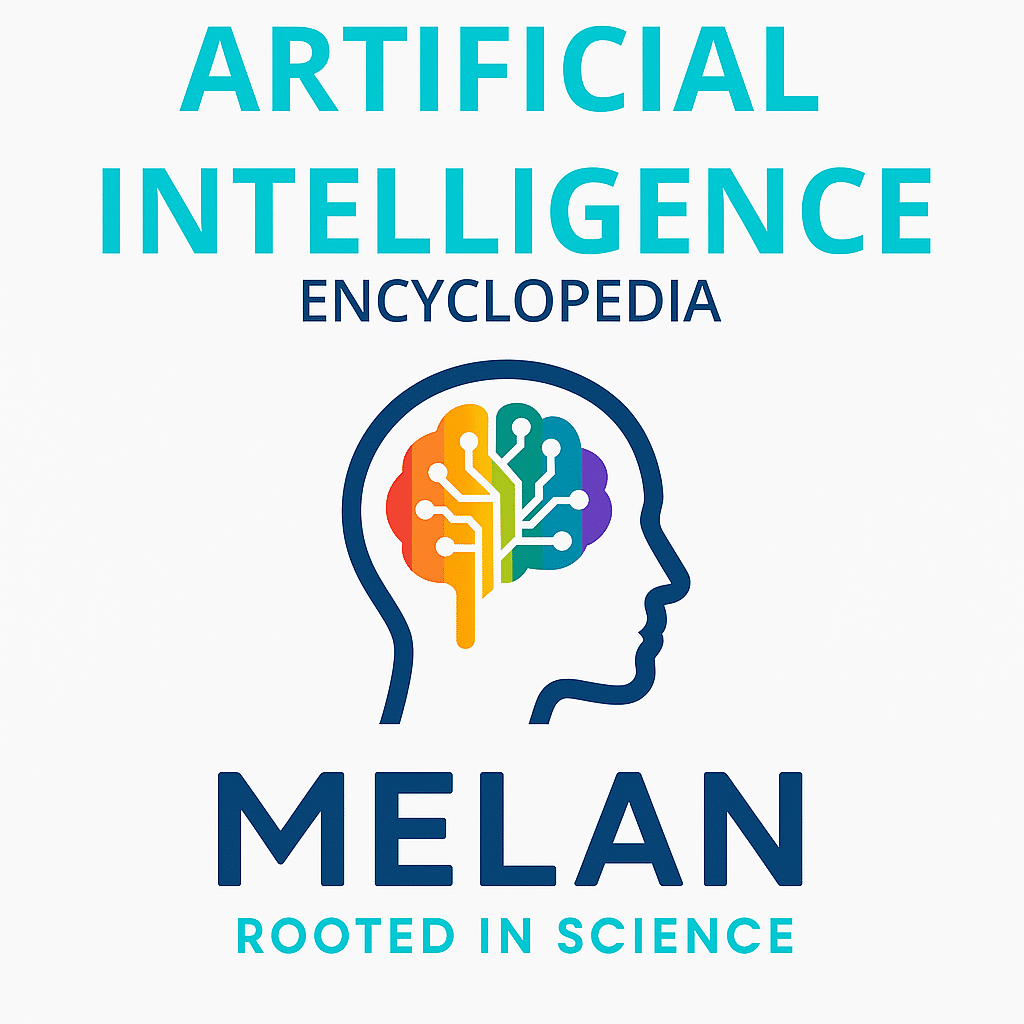Federated Learning refers to a machine learning approach that trains artificial intelligence models across multiple decentralized devices or institutions without centralizing data, enabling collaborative AI development while preserving data privacy and security. This technique allows smartphones, hospitals, financial institutions, and other organizations to contribute to model training while keeping sensitive information on local devices, fundamentally changing how AI systems can be developed in privacy-sensitive environments.
Federated Learning
|
|
|---|---|
| Category | Machine Learning, Distributed Computing |
| Subfield | Privacy-Preserving AI, Decentralized Learning, Edge Computing |
| Key Components | Local Training, Model Aggregation, Secure Communication |
| Primary Applications | Mobile AI, Healthcare, Financial Services |
| Core Principles | Data Minimization, Privacy Preservation, Distributed Intelligence |
| Sources: Google Research Federated Learning, McMahan et al. Original Paper, Federated Learning Blog | |
Other Names
Distributed Learning, Collaborative Learning, Decentralized Machine Learning, Privacy-Preserving Learning, Edge Learning, Confederated Learning, Peer-to-Peer Learning
History and Development
Federated learning was first formally introduced by Google researchers H. Brendan McMahan, Eider Moore, Daniel Ramage, and others in 2016 to improve keyboard prediction on Android devices without compromising user privacy. The concept built on earlier work in distributed computing and privacy-preserving technologies from the 2000s. Google’s initial implementation focused on Gboard keyboard suggestions, where millions of smartphones could contribute to improving text prediction while keeping typing data private.
The field expanded rapidly after 2017 as researchers at institutions like Carnegie Mellon, MIT, and various European universities developed new algorithms and applications. Major tech companies including Apple, Microsoft, and Facebook began implementing federated approaches for various AI applications, while the COVID-19 pandemic accelerated adoption in healthcare for collaborative research without sharing sensitive patient data.
How Federated Learning Works
Federated learning operates through a coordinated process where a central server distributes an initial AI model to multiple participating devices or institutions. Each participant trains the model locally on their own data without sharing the raw information with others. After local training, participants send only the model updates or gradients back to the central server, not the actual data. The server aggregates these updates using mathematical techniques like federated averaging to create an improved global model. This updated model is then distributed back to participants for the next round of training.
The process repeats iteratively until the model reaches desired performance levels, ensuring that sensitive data never leaves its original location while still enabling collaborative AI development.
Variations of Federated Learning
Horizontal Federated Learning
Multiple organizations with similar data types but different user populations collaborate to train models, such as banks in different regions sharing fraud detection insights while keeping customer data private and maintaining competitive advantages.
Vertical Federated Learning
Organizations with different types of data about the same users work together to create comprehensive models, like retailers and banks combining purchase and credit data to improve customer understanding without direct data sharing.
Transfer Federated Learning
Participants with limited overlap in both users and data features collaborate to improve model performance for specific tasks, often used when data is scarce or when adapting models to new domains or populations.
Real-World Applications
Collaborative learning powers keyboard prediction and voice recognition improvements on smartphones, where millions of devices contribute to better AI models without uploading personal conversations or messages. Healthcare institutions use federated learning to develop diagnostic AI models by collaborating across hospitals and research centers while maintaining patient privacy and complying with regulations like HIPAA. Financial institutions employ federated approaches for fraud detection and credit risk assessment, sharing threat intelligence without exposing customer transaction details.
Autonomous vehicle companies use decentralized machine learning to improve driving algorithms by aggregating insights from vehicle fleets while protecting location and travel pattern privacy. Internet of Things devices in smart cities and industrial settings use federated learning to optimize operations while keeping operational data secure and competitive advantages protected.
Federated Learning Benefits
Collaborative learning enables AI development using much larger and more diverse datasets than any single organization could collect, leading to more accurate and robust models that work better across different populations and conditions. It preserves data privacy by design, eliminating the need to centralize sensitive information and reducing risks of data breaches or misuse. Organizations can collaborate on AI development while maintaining competitive advantages and complying with data protection regulations like GDPR and HIPAA.
The approach reduces data transfer costs and bandwidth requirements since only model updates, not raw data, are transmitted. Federated learning also enables AI capabilities on edge devices with limited connectivity, allowing models to improve continuously even when internet access is sporadic or expensive.
Risks and Limitations
Technical Challenges and System Complexity
Decentralized machine learning faces significant technical hurdles including communication overhead from frequent model updates, heterogeneity in participant devices with varying computational capabilities, and challenges in handling participants who drop out during training. Non-identical data distributions across participants can lead to model convergence problems and reduced accuracy compared to centralized training approaches.
Privacy and Security Vulnerabilities
Despite privacy protections, collaborative learning systems remain vulnerable to sophisticated attacks including model inversion attacks that can reconstruct training data from model updates, membership inference attacks that determine if specific data was used in training, and poisoning attacks where malicious participants corrupt the global model. The aggregation process itself can leak information about participating organizations’ data characteristics.
Regulatory Compliance and Legal Frameworks
The distributed nature of decentralized machine learning creates complex legal questions about data governance, liability, and compliance across multiple jurisdictions. Different participants may be subject to varying regulatory requirements, making coordinated compliance challenging. The European Union’s AI Act includes provisions affecting federated learning systems, particularly for high-risk AI applications that require transparency and audit trails.
Industry Standardization and Interoperability Issues
Lack of standardized protocols and frameworks makes it difficult for organizations to participate in federated learning initiatives across different technology platforms. Competition between tech companies has led to proprietary implementations that don’t interoperate, limiting the potential benefits of collaboration. These regulatory changes stem from legal pressure following data breaches in centralized AI systems, market demands from organizations seeking privacy-preserving collaboration methods, reputation management after high-profile privacy violations, and investor concerns about data liability and regulatory risk.
Governance and Coordination Challenges
Technology companies, research institutions, healthcare organizations, and regulatory bodies drive development of federated learning standards and best practices, while privacy advocates and data protection authorities influence policy requirements. Professional organizations and industry consortiums work to establish technical standards and ethical guidelines. The intended outcomes include enabling beneficial AI development while protecting individual privacy, reducing data breach risks through decentralized approaches, facilitating cross-organizational collaboration under strict privacy constraints, and maintaining competitive advantages while sharing collective intelligence.
Initial evidence shows increased adoption in healthcare and mobile applications, development of privacy-preserving technologies, growing investment in federated learning platforms, and emergence of regulatory frameworks addressing distributed AI systems, though comprehensive impact assessment continues as the technology matures and scales.
Current Debates
Privacy Guarantees vs. Model Performance
Researchers debate the fundamental trade-offs between privacy protection and model accuracy in collaborative learning systems. Some argue that privacy-preserving techniques like differential privacy necessarily reduce model quality, while others claim that larger, more diverse federated datasets can actually improve performance despite privacy constraints.
Centralized Coordination vs. Truly Decentralized Approaches
The field is divided between decentralized machine learning systems that rely on central coordinators and fully decentralized peer-to-peer approaches. Critics argue that centralized coordination creates single points of failure and potential privacy vulnerabilities, while supporters claim it’s necessary for efficient model training and quality control.
Open Source vs. Proprietary Federated Learning Platforms
Technology companies and researchers debate whether federated learning should be built on open standards and platforms or whether proprietary solutions can provide better security and performance. This affects interoperability and the ability of smaller organizations to participate in federated learning initiatives.
Healthcare Data Sharing and Patient Consent
Medical researchers and privacy advocates disagree about appropriate consent mechanisms for collaborative machine learning in healthcare, including whether existing research consent covers federated training and how to handle data from patients who cannot provide informed consent.
Cross-Border Federated Learning and Data Sovereignty
International collaborations face challenges around data sovereignty laws that restrict cross-border data processing, even when using federated approaches. Legal experts debate whether federated learning constitutes data transfer under various national privacy laws and how to structure international federated learning projects.
Media Depictions of Federated Learning
Movies
- The Imitation Game (2014): Alan Turing’s (Benedict Cumberbatch) distributed codebreaking efforts parallel modern federated learning concepts, where multiple teams collaborate on AI problems while maintaining operational security
- Hidden Figures (2016):The collaboration between NASA teams working on separate components of space missions reflects federated learning principles of distributed expertise contributing to common goals, as exemplified by the work of scientists Katherine Goble Johnson (Taraji P. Henson), Dorothy Vaughan (Octavia Spencer), and Mary Jackson (Janelle Monáe).
- The Social Dilemma (2020): Documentary exploring how tech companies collect personal data, highlighting the need for privacy-preserving approaches like federated learning in AI development
TV Shows
- Silicon Valley (2014-2019): The show’s exploration of decentralized internet concepts parallels decentralized machine learning’s distributed approach to AI training, particularly in episodes dealing with data privacy and distributed computing
- Person of Interest (2011-2016): The Machine’s distributed surveillance network reflects federated learning concepts where multiple data sources contribute to AI capabilities without centralizing all information
- Black Mirror: Episodes like “Nosedive” explore distributed data collection and AI systems, highlighting both the benefits and risks of decentralized approaches to artificial intelligence
Books
- The Age of Surveillance Capitalism (2019) by Shoshana Zuboff: Analyzes centralized data collection practices that collaborative learning aims to address, exploring alternatives to surveillance-based AI development
- Data and Goliath (2015) by Bruce Schneier: Examines privacy-preserving technologies including distributed approaches to data analysis that align with federated learning principles
- Weapons of Math Destruction (2016) by Cathy O’Neil: Discusses algorithmic bias issues that federated learning can help address by incorporating more diverse and representative datasets
Games and Interactive Media
- Watch Dogs series (2014-present): The distributed hacking networks and collaborative data analysis depicted in the games reflect decentralized machine learning concepts of coordinated but decentralized AI systems
- EVE Online (2003-present): The game’s distributed player-driven economy and collective intelligence systems parallel federated learning’s approach to distributed problem-solving and knowledge aggregation
- Distributed AI Puzzles: Online collaborative games and citizen science projects like Foldit demonstrate federated learning principles where distributed participants contribute to AI training and problem-solving
Research Landscape
Current research focuses on improving federated learning algorithms to handle non-identical data distributions and reduce communication overhead through techniques like compression and sparsification. Scientists are developing stronger privacy guarantees through advanced cryptographic methods, differential privacy, and secure multi-party computation. Cross-device federated learning research addresses challenges of training models on mobile devices with limited battery and connectivity. Emerging areas include federated learning for foundation models, integration with blockchain technologies for decentralized coordination, and applications in Internet of Things networks where thousands of sensors collaborate on environmental monitoring and predictive maintenance.
Selected Publications
- AI Patents Block Life-Saving Drug Discovery
- What is Artificial Intelligence (AI)?
- 60 ChatGPT Prompts for Writing Ad Copy Fast
- What is Digital Marketing?
- Build a Powerful Content Marketing Strategy for Your Wellness Beauty Brand
- What is a “personal hardship” flag in Google Merchant Center?
- Mycorrhizal symbioses and tree diversity in global forest communities
- What is Schema Markup?
- SEO is Outdated, Optimize Your Website for AI
- Google Personal Hardship Alerts Get It Wrong and Mislabel Products
- New case law and liability risks for manufacturers of medical AI
- Stop Training Google to Steal Your Patients with 3rd-Party Analytics
- When Google Misunderstands Your Business and You Rank for Irrelevant Keywords
- Why Does AI Struggle with Context Cues in Language?
- Hello world!
Frequently Asked Questions
What exactly is federated learning?
Federated learning is a way to train AI models by having multiple devices or organizations collaborate without sharing their actual data, only sharing model improvements while keeping sensitive information private on local systems.
How does federated learning protect my privacy better than regular AI?
Instead of uploading your personal data to company servers, federated learning keeps your information on your device and only shares anonymous model updates, significantly reducing privacy risks and data breach exposure.
What are the main challenges with federated learning?
Key challenges include technical complexity in coordinating distributed training, potential security vulnerabilities despite privacy protections, communication overhead, and difficulties handling participants with different types of data or unreliable connections.
How is federated learning being used in real applications today?
Major applications include smartphone keyboard prediction, healthcare research across hospitals, financial fraud detection, autonomous vehicle improvement, and IoT device optimization, all while maintaining data privacy and regulatory compliance.
Can federated learning work as well as traditional centralized AI training?
Federated learning can achieve comparable or sometimes better performance than centralized training by accessing larger, more diverse datasets, though it may face challenges with communication overhead and coordination complexity that can affect training efficiency.


